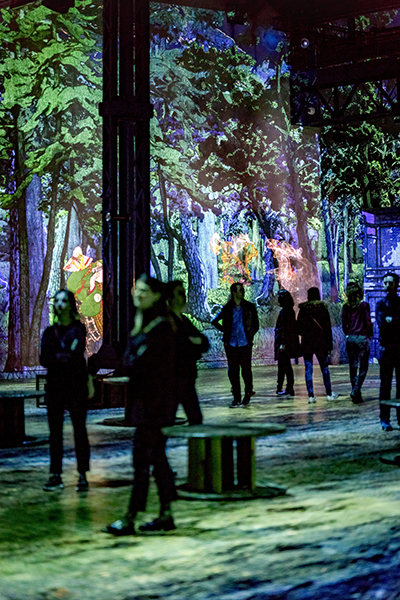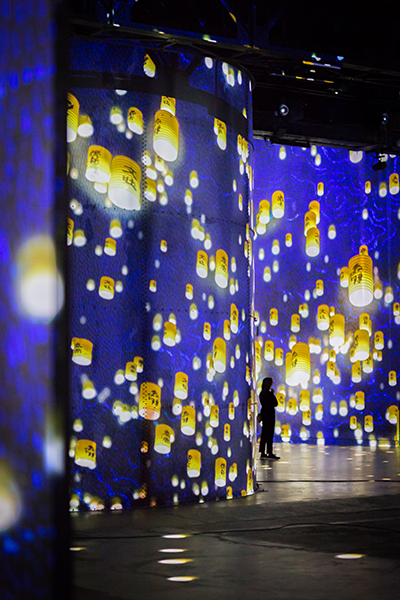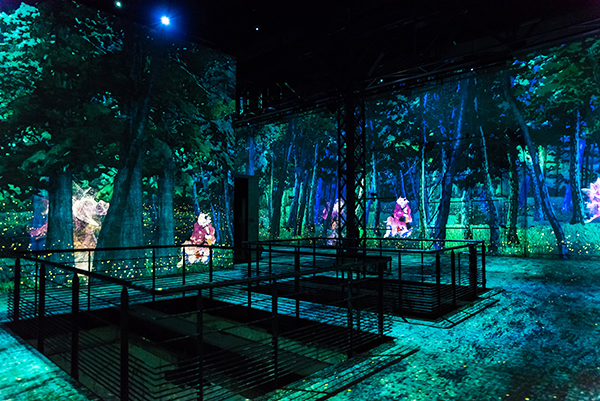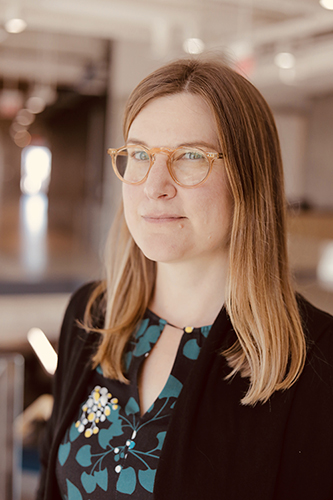Atelier des Lumières Adds an Immersive Dimension to the Art World

With so much of our daily lives viewed through rectangular screens, it may come as no surprise that crowds are flocking to experience the frame-breaking artistic spectacle of Atelier des Lumières. These exhibitions provide a captivating escape from flat-screen reality, extending historic paintings beyond the traditional museum and gallery context and scattering their pieces and impressions across multi-surfaced canvases in unlikely spaces.
Originated by Culturespaces, longstanding guardians of established museums and monuments throughout France, the Atelier des Lumières present another layer of creative understanding through multi-dimensional audiovisual interpretations of the world’s most renowned artworks.
“It’s not a classical exhibition,” explains Augustin de Cointet de Fillain, Director of AMIEX, the Art & Music Immersive Experience concept developed by Culturespaces. “In France, there was a lot of debate about ‘Is it a real exhibition or not?’ But it’s two different experiences. You can compare them, they go together, but it’s not one or the other.”
It was with the intention of creating something complementary to more traditional museum experiences that originally prompted Culturespaces to use projection mapping to illuminate the limestone quarry walls of Les Baux-de-Provence with massive artworks in its inaugural Carrières de Lumières exhibition in 2012. An instant favorite with a wide audience of visitors, the decision was made to create a similar experience in Paris, and Atelier des Lumières was born.
Faced with a lack of gorgeous limestone quarries in Paris, an abandoned foundry was selected for its central location and a grand scale that could contain large projections and their correspondingly sizable crowds of visitors. More though, the location was chosen for its sound.
Yes, sound is actually a chief priority for the developers of the highly immersive works of art that are projected all over walls, ceilings and floors of a given space. As Atelier des Lumières expands to more locations in France, and beyond to Korea and more locations that are in development, de Cointet de Fillain notes, “All the venues are [selected] starting with sound. We need something large, located close to people, and with a particular sound.”

Describing the process for how each exhibition’s team of cinema directors and composers select or create music to accentuate the art, de Cointet de Fillain points out the importance of sonic rhythm to the entire “immersive art” experience. Noting how the tempo of the music is often set to contrast with the tempo of the images flickering across the screens, he explains, “You want to have a difference between what you see and what you hear,” to create something remarkable.
Striking the correct balance between images and music is a careful process. For each exhibition, the creative team selects artworks and determines a narrative arc representing a significant aspect of the artist and their work. Then, depending on the overall feeling that is meant to be evoked by the experience, the team selects existing music or commissions new compositions to deliver the emotional aspects of the story.
“The difference between a classical exhibition and an immersive one is that an immersive exhibition is firstly asking your feelings, your senses, or inspiration, and afterward you have an intellectual vision,” de Cointet de Fillain explains, while a classical art show is the reverse. To deliver a feeling-first immersive art experience, he elaborates, “It’s a balance between what you’re seeing, what you are hearing and what you are feeling.”
The formula has worked well. When Atelier des Lumières opened in Paris, Culturespaces was hoping for maybe half a million visitors in the first year. But more than double that number turned up during the show’s span from April 13, 2018 until January 6, 2019, with some 1.2 million people moving through the debut exhibition of Gustav Klimt artworks.
The success of the first exhibition drove a significant upgrade for the display setup before the next premiere. Seeking even more luxurious color and detail across every surface, along with the reliability required to keep the exhibition running in top form at all times, Culturespaces worked with Paris-based AV integrator Cadmos to install a bigger, better system.

Chief among the new hardware components selected for the upgrade were 35 new Modulo Kinetic media servers from Modulo Pi, which were key to the install because eight terabytes of data are required to run the show, which contains anywhere from 800-1000 moving images. Each server drives five of the venue’s 130 total Barco projectors, with a few extra servers added in for redundancy when special events take over the space. Just to be completely safe, sponsor and corporate presentations live on their own servers, completely separate from the main show.
The current “Van Gogh, Starry Night” exhibition, which will run through December 2019, plays in regular rotation with another visual extravaganza that provides an informative contrast. A shorter immersive exhibition, “Dreamed Japan, Images of the Floating World,” was inspired by the Japanese Edo period prints that inspired Van Gogh and his contemporaries.
Beyond the main space at the foundry, an additional gallery is dedicated to emerging artists. The smaller room is a good entry point for new artists to share “what they have to say, and to show their capability to create,” de Cointet de Fillain says. Then, as those artists gain popularity and increase technical capabilities for an increased scale of work, they may graduate to a show in a larger venue.

This opportunity speaks to another pillar of Atelier des Lumières, which is the democratization of art. Culturespaces has noted the comparatively narrow demographics frequenting its classical museums, and with the
Atelier des Lumières, the organization set out to create something new to attract more types of visitors. Sure, it might be a generational thing, but it’s also just a generally modern sensibility that drives people to want to explore
artwork in new ways. “It’s something people want nowadays,” de Cointet de Fillain observes.
Certainly, anyone who has ever paused in front of a painting, letting the image sink in and feeling all that it has to offer, might want to fully immerse themselves in that work. So, when the mood strikes, those audiences might replace the feeling of standing in a brightly lit gallery or museum in a crowd of other people struggling to see the same small painting, with the option of being in an entire room illuminated by refractions of a work of art. There, they might find new context for each brushstroke, as the colors fill the room and shift the quality of light with each image change. As they move around and feel the effects from every angle, floor to ceiling and across all the walls, they’ll probably enjoy the escape from the confines of our everyday rectangle viewing.





